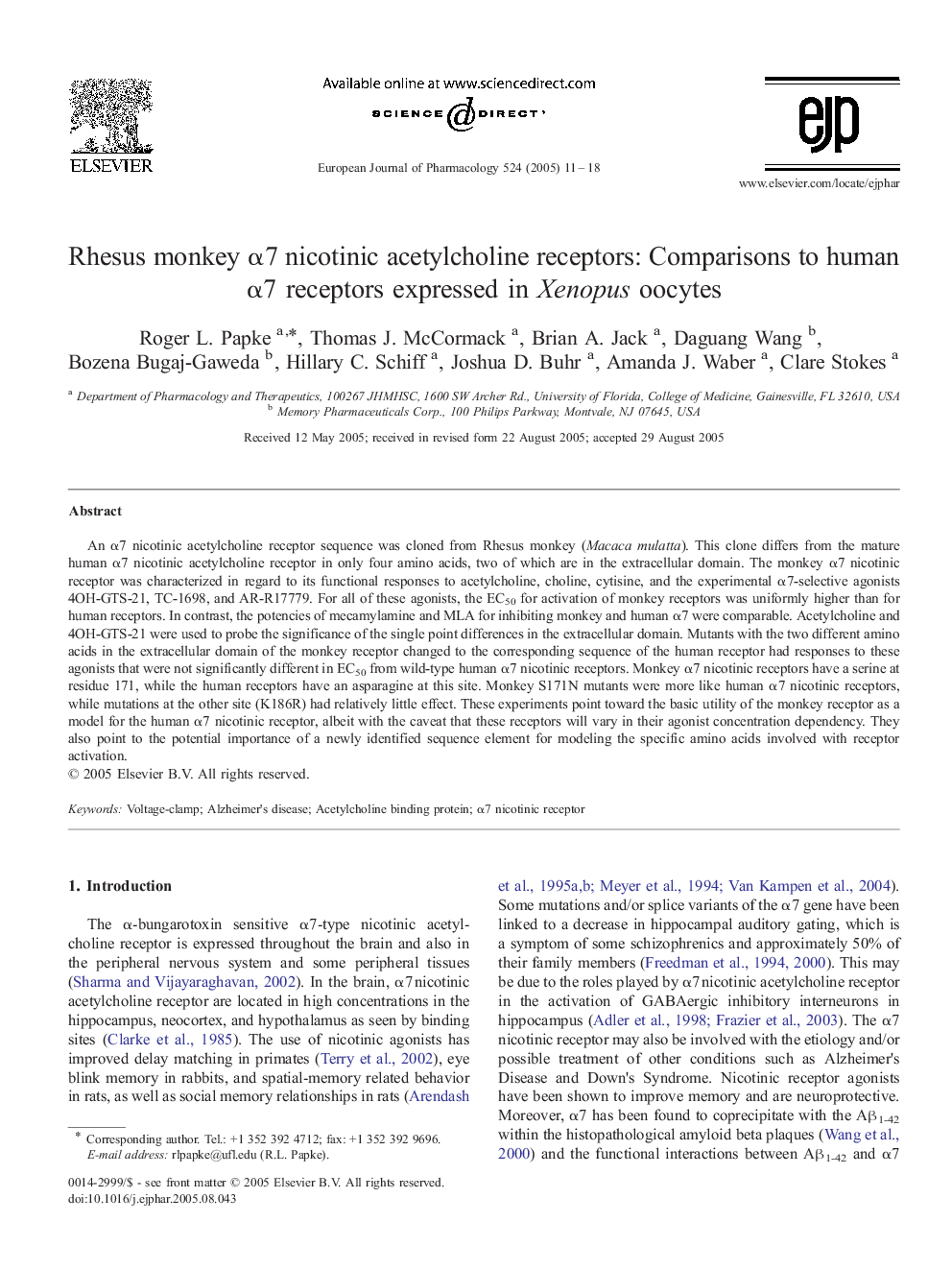| کد مقاله | کد نشریه | سال انتشار | مقاله انگلیسی | نسخه تمام متن |
|---|---|---|---|---|
| 9921009 | 1559198 | 2005 | 8 صفحه PDF | دانلود رایگان |
عنوان انگلیسی مقاله ISI
Rhesus monkey α7 nicotinic acetylcholine receptors: Comparisons to human α7 receptors expressed in Xenopus oocytes
دانلود مقاله + سفارش ترجمه
دانلود مقاله ISI انگلیسی
رایگان برای ایرانیان
کلمات کلیدی
موضوعات مرتبط
علوم زیستی و بیوفناوری
علم عصب شناسی
علوم اعصاب سلولی و مولکولی
پیش نمایش صفحه اول مقاله

چکیده انگلیسی
An α7 nicotinic acetylcholine receptor sequence was cloned from Rhesus monkey (Macaca mulatta). This clone differs from the mature human α7 nicotinic acetylcholine receptor in only four amino acids, two of which are in the extracellular domain. The monkey α7 nicotinic receptor was characterized in regard to its functional responses to acetylcholine, choline, cytisine, and the experimental α7-selective agonists 4OH-GTS-21, TC-1698, and AR-R17779. For all of these agonists, the EC50 for activation of monkey receptors was uniformly higher than for human receptors. In contrast, the potencies of mecamylamine and MLA for inhibiting monkey and human α7 were comparable. Acetylcholine and 4OH-GTS-21 were used to probe the significance of the single point differences in the extracellular domain. Mutants with the two different amino acids in the extracellular domain of the monkey receptor changed to the corresponding sequence of the human receptor had responses to these agonists that were not significantly different in EC50 from wild-type human α7 nicotinic receptors. Monkey α7 nicotinic receptors have a serine at residue 171, while the human receptors have an asparagine at this site. Monkey S171N mutants were more like human α7 nicotinic receptors, while mutations at the other site (K186R) had relatively little effect. These experiments point toward the basic utility of the monkey receptor as a model for the human α7 nicotinic receptor, albeit with the caveat that these receptors will vary in their agonist concentration dependency. They also point to the potential importance of a newly identified sequence element for modeling the specific amino acids involved with receptor activation.
ناشر
Database: Elsevier - ScienceDirect (ساینس دایرکت)
Journal: European Journal of Pharmacology - Volume 524, Issues 1â3, 7 November 2005, Pages 11-18
Journal: European Journal of Pharmacology - Volume 524, Issues 1â3, 7 November 2005, Pages 11-18
نویسندگان
Roger L. Papke, Thomas J. McCormack, Brian A. Jack, Daguang Wang, Bozena Bugaj-Gaweda, Hillary C. Schiff, Joshua D. Buhr, Amanda J. Waber, Clare Stokes,